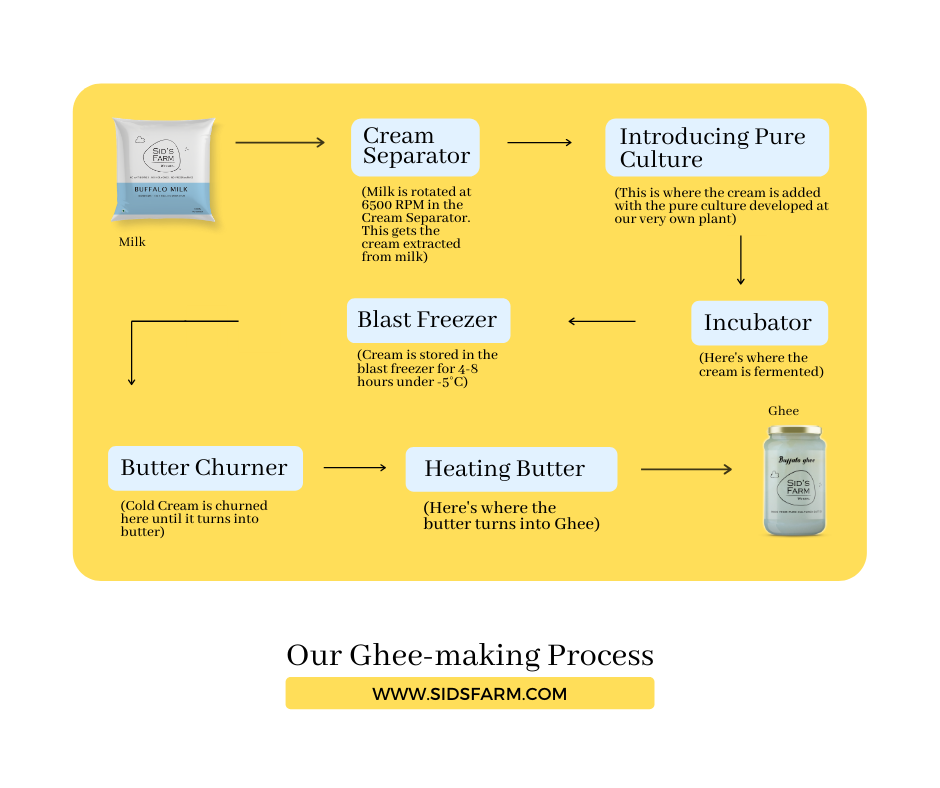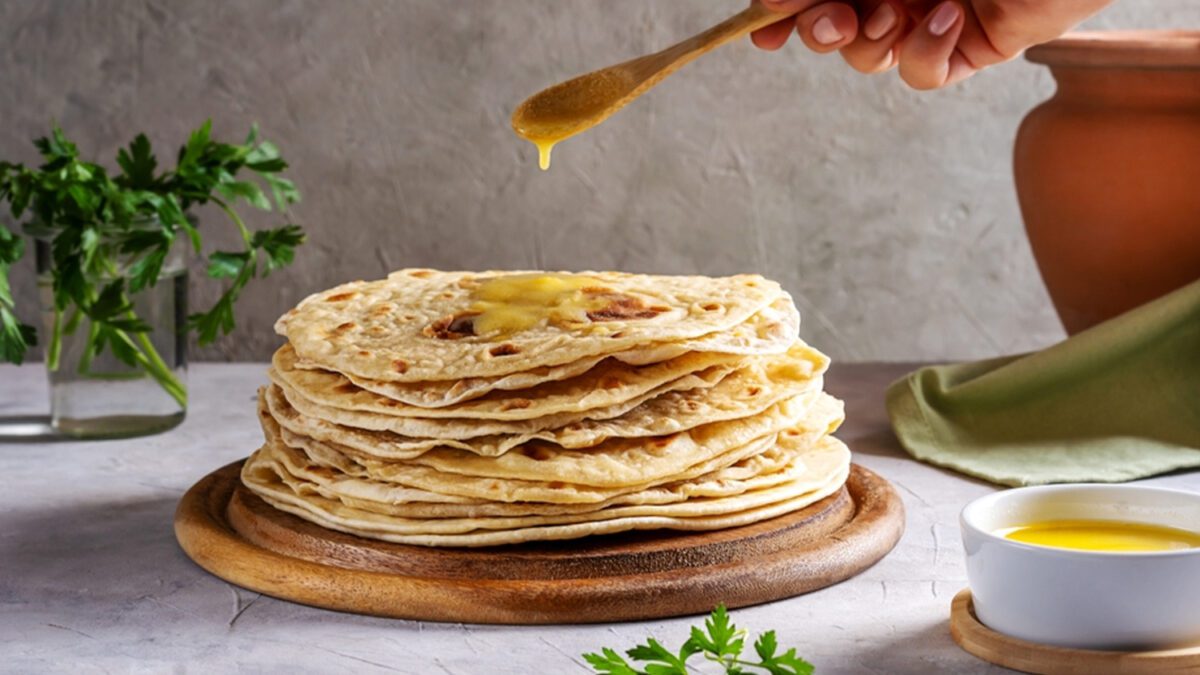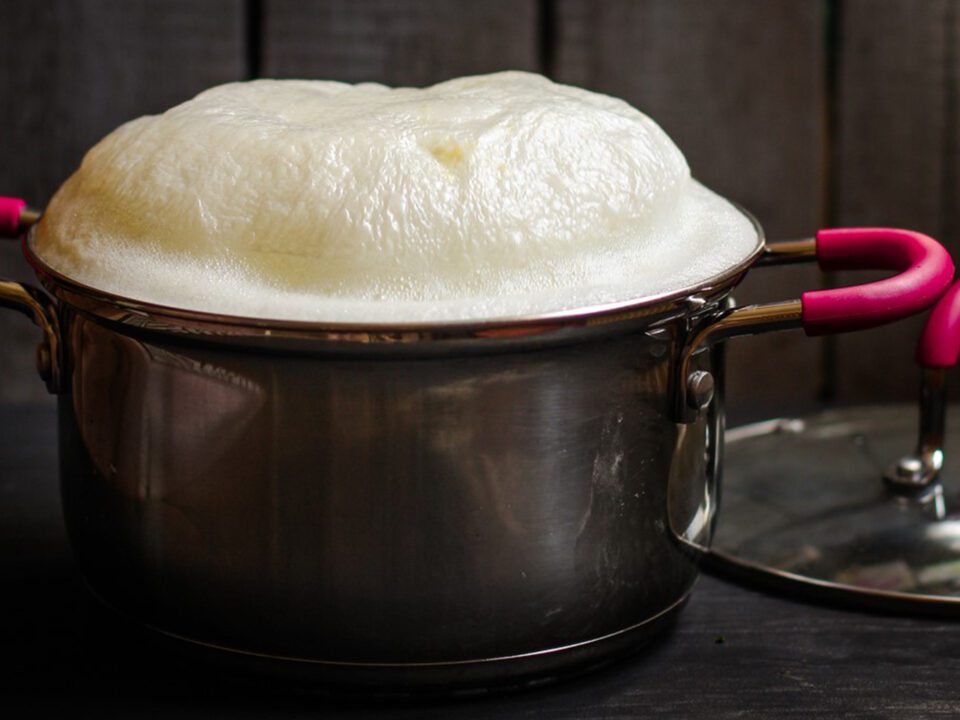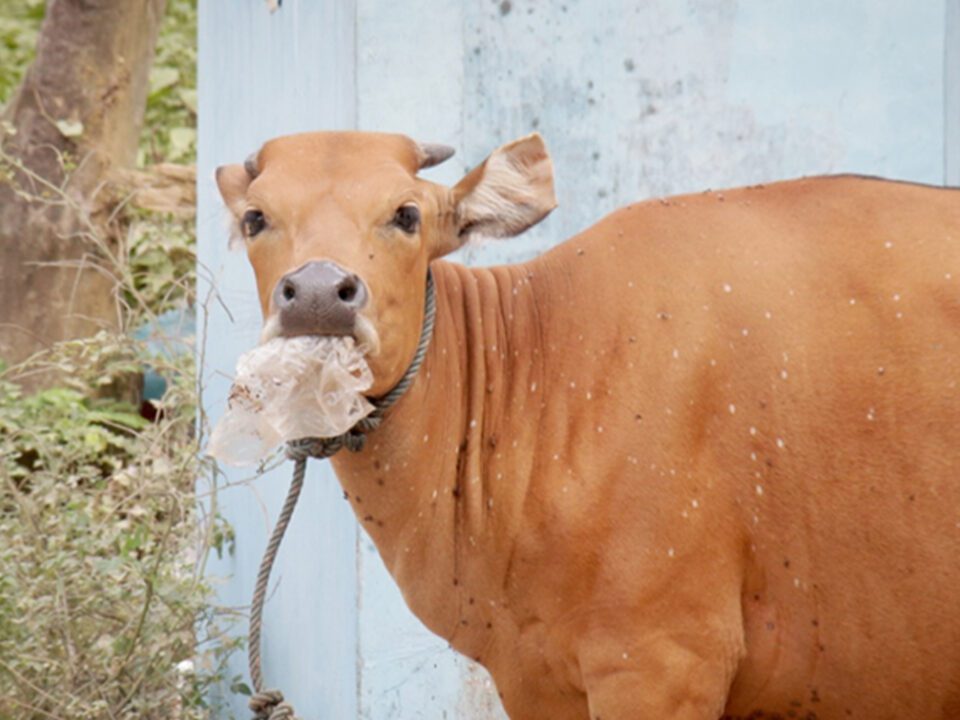
6 Common Myths about Ghee
May 22, 2023
Ghee Vs Clarified Butter – Are they both the same?
May 24, 2023Looking beyond Malai ka Ghee
Have you noticed how ghee has become a global sensation lately? It’s everywhere, from being hailed as a “superfood” to being a must-have ingredient for Keto enthusiasts. This golden elixir has truly captured the hearts of people from all walks of life. We’ve even started using it in trendy drinks like bulletproof coffee! It’s incredible to see how our relationship with ghee has evolved over time, from its traditional use in lighting lamps during festivals to its modern-day applications in cooking, skincare, and overall health. But here’s the real question: have we kept up with the times when it comes to choosing the purest ghee out there? Did our ghee buying choices evolve with evolving uses?
Malai (cream) is considered an ultimate indicator for producing pure ghee. For years, people have relied on the thickness of malai as a key factor determining both the quality and quantity of ghee. But is this outdated idea still relevant in today’s world? Unfortunately, the answer is no. Many brands still use this strategy to make profit, but having thick malai in your milk isn’t enough to guarantee pure ghee. So, what should you look for instead? Tested milk is the key to ensuring high-quality ghee. The thickness of malai is affected by many factors, such as the breed of the cow, the feed it consumes, and even the season in which it is being milked. This means that even if your milk has a thick layer of malai, it doesn’t necessarily mean that your ghee is pure. Milk that is adulterated is the seed of impurity that grows gradually, seeps into adulterated malai, and then ultimately becomes part of the adulterated ghee. Here, adulterated milk is like a virus that spreads throughout the dairy supply chain, tainting every product it touches, including ghee. Many brands use this idea as a selling point to increase profits, making it more important than ever to be vigilant when choosing your ghee product. With a sea of options available at the supermarket, it has become more important than ever to look beyond Malai. It can be challenging to determine which ghee is the safest and purest to buy.

Premium brands like Sid’s Farm, produce the purest ghee using the best practices. They start by sourcing raw milk from trusted farms, ensuring the highest quality in every batch of milk, and testing milk sourced over 45 parameters (6500+ tests on an average day). Once they have the purest milk they extract cream from the fresh milk to it and introduce pure culture developed carefully at their plant. After fermentation, the mixture is put in a blast freezer to ensure that the cream and milk are well-settled. They then take the cold cream and churn it perfectly to create fresh butter. This butter is then heated slowly to get the purest and most tested ghee possible.
Their unique ghee-making process ensures that their ghee is of the highest quality, with a rich, nutty flavour and aroma. Unlike many other brands that use marketing gimmicks like thick malai, they solely rely on rigorous testing and high-quality processes to produce ghee that is unmatched in purity and taste. In addition to its delicious flavour, their ghee is also rich in vitamins A, D, E, and K, and contains antioxidants that boost immunity and promote healthy skin. The best ghee always comes from the best ingredients and the most careful preparation, and they strive to deliver that to their customers with every jar. Apart from being available through their Sid’s Farm app and all leading modern trade chains or stand-alone modern trade outlets, their pure ghee is easily available on their website (www.sidsfarm.com) or Amazon for delivery anywhere in India. So, the next time you enjoy their ghee on your parathas, biryani, or laddus, you can rest assured that it’s made with the purest milk, the finest cream, and the most meticulous care.




